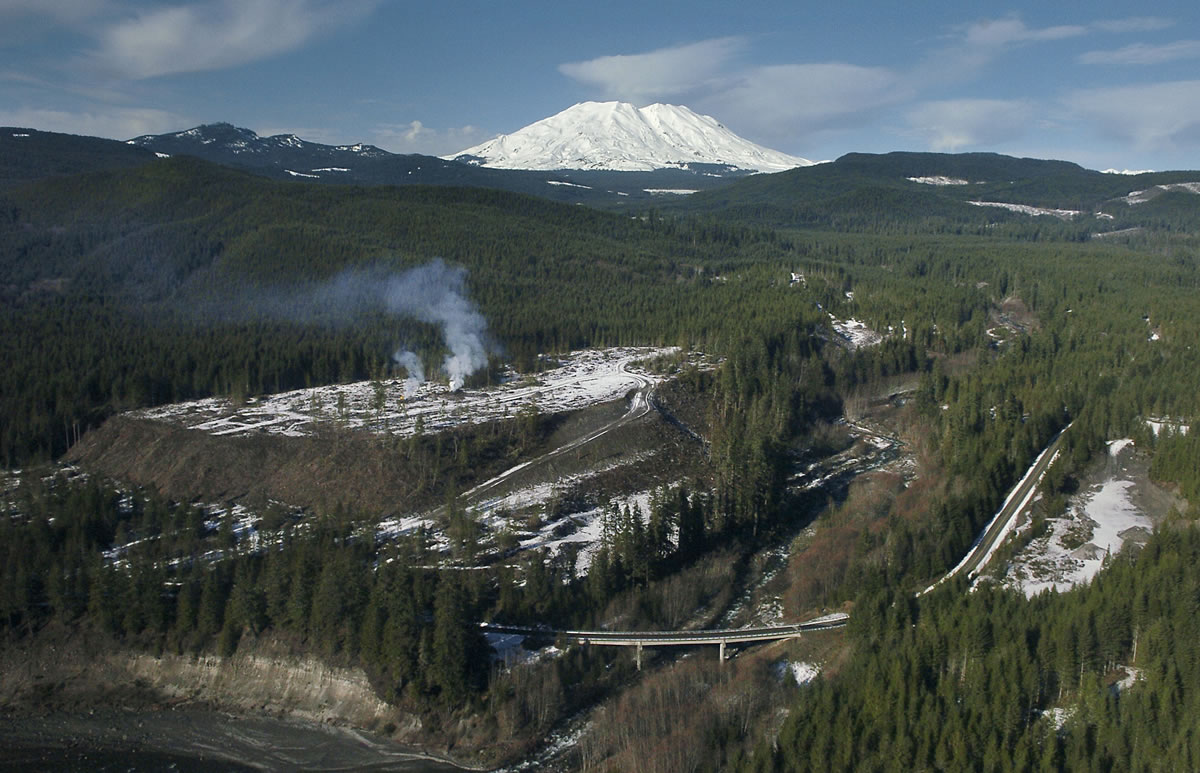Reciting the numbers he now knows by heart, Skamania County Commissioner Chris Brong has been greeted with outright disbelief.
A county budget slashed from $50 million to $25 million in three years. A hundred permanent and temporary county employees laid off. A reduction to a four-day work week, providing only bare-minimum services.
Skamania County was battered by the economic turmoil of recent years, a fate familiar to just about any government agency these days. But it’s other outside forces that Brong and others say prevent the county from lifting itself out of the financial mess.
Now Skamania County leaders are asking federal officials to help tilt the balance back in their favor. Tops on their wish list: reliable federal funding, and an increase in tax-generating timber harvests on federal lands.
All three county commissioners made their case in a letter to U.S. Sens. Patty Murray and Maria Cantwell, plus U.S. Rep. Jaime Herrera Beutler, in May.
“The forests can be economically productive and commerce expanded while protecting the environment,” the commissioners wrote. “What we are asking for is nothing more than the right
to manage our own destiny, provide for our families, local schools and services without questionable constraints imposed upon us by federal agencies.”
Brong was among a group that met with staff aides to Murray and Cantwell, both Democrats, last week. Herrera Beutler, a Republican, will lead a roundtable discussion on the subject of forest management in Stevenson on Tuesday.
Eighty percent of Skamania County is federally owned — most of that by the U.S. Forest Service, which manages the 1.3-million-acre Gifford Pinchot National Forest. Another 8 percent is owned by the state. And 10 percent of the county is designated private timberland, which generates significant tax revenue only when harvested.
That leaves only 2 percent of the entire county as private, regularly taxed property.
“It’s pretty precarious,” Brong said. “It’s not a situation that makes it easy for new development to come in.”
Brong uses a couple of high-profile examples to put the plight of his home county in perspective.
“When you think Skamania County, think Josephine and Curry County in Oregon,” Brong said. Both historically timber-dependent counties have seen huge cuts to public services as harvest revenues and federal assistance dwindled.
“But we’re worse,” Brong said.
The Gifford Pinchot forest used to be one of the biggest timber producers in the Northwest. It sold 689 million board-feet in 1990, before the 1994 Northwest Forest Plan, spotted owl habitat and other environmental rules changed the game and put much of the forest off-limits. In 2012, the Gifford Pinchot forest generated about 33 million board-feet of timber sales, said Paul Spencer, a member of the Gifford Pinchot Accountability Group.
In 2000, the federal Secure Rural Schools program was established to give timber counties annual payments to make up some of that lost revenue. But the shrinking program leaves counties at the mercy of federal assistance that wavers from year to year. Congressional renewal has been anything but routine.
The most recent one-year installment of Secure Rural Schools money gave Skamania County $1.8 million — still a sizable contribution to the budget, but far less than the $5.5 million it averaged before 2010.
Conservation efforts have added another wrinkle to the picture. One recent purchase transferred 2,330 acres of private timberland near Mount St. Helens to the Vancouver-based Columbia Land Trust. The land trust said the acquisition was part of a larger conservation project prompted by “unchecked and uncoordinated development” near Swift Reservoir.
Not everyone welcomes those efforts.
But the transaction didn’t take the property off the county tax rolls, and the land trust pledged to keep it in active forestry.
Columbia Land Trust Executive Director Glenn Lamb acknowledged it likely won’t be harvested to the level of the last decade, but said that’s largely due to the amount already cut there, not a change in strategy from what its previous owner Pope Resources would have done.
Lamb estimated the difference in tax revenue to the county would be “negligible.” The goal is to protect sensitive habitat without harming the people who also depend on it financially, he said.
“It’s important for conservation groups to make it a priority to understand that they have an impact,” Lamb said.
The commissioners’ letter also asked for environmental review and decision-making on federal land to be streamlined, minimizing the litigation that can tie up forest service plans. The letter also called for an in-kind exchange of federal land to Skamania County in the event of a new acquisition.
Brong said he’s “cautiously optimistic” based on what he’s heard from federal officials so far. He believes it’s time to take a hard look at federal forest management, and says he’s not alone.
“There’s a momentum now that’s occurring,” Brong said, “whether they want to work on this or not.”
Eric Florip: 360-735-4541; http://twitter.com/col_enviro; eric.florip@columbian.com




